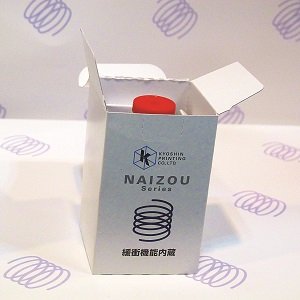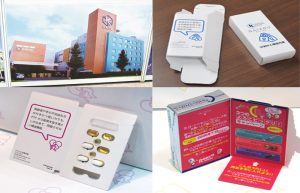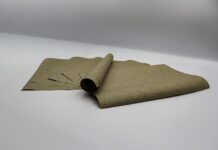Packaging design is sometimes mystified – one can’t figure out who does what. We know that purchase managers, product developers and brand managers are somehow involved and there are creative agencies and designers. At one point or another inputs are needed
from material and prepress and print specialists and others who prototype and have insights on the efficiency of making the package material, filling and sealing it, and its transportation – the logistical efficiency and even the shelf impact of the filled and sealed
package. Another important aspect nowadays comes from experts in security, accessibility and environmental impact. It’s rare that one gets to meet an innovator who is continuously exploring many of these concerns. Naresh Khanna reports
Over the past year we have been able to visit Tokyo twice and learn a bit about packaging in Japan. There is much to share – packaging in Japan is a part of the circular economy which measures all inputs and outputs in the entire economy to derive the net waste that cannot be recycled. At Tokyo Pack in October 2014, the two rows of halls were separated by the concourse running through the centre – on one side are the equipment, consumable and technology suppliers and on the other are the packaging converters where they show their products, new designs and innovations. In Japan it is the packaging printers and converters who come up with many if not all of the innovations.
The converter side at Tokyo Pack 2014 had many large packaging companies such as Oji and Rengo with large displays showing a multiple range of flexible, carton and corrugated packaging solutions. At the same time there were speciality packaging companies such as Kyoshin Printing Company which caught our eye with its unique display of pharmaceutical cartons where the medicine bottle inside the carton seemed to spring up when the carton was opened.
The inventor of these carton designs Yasuo Hirose explained that it was the carton board itself that provided both the cushioning against damage for the bottle in the carton and the spring that made the bottle inside easily accessible when the carton was opened. The elegant solution meant that no expensive cushioning material needed to be separately inserted to prevent breakage in transport and the carton itself provided this protection. The patented design meant fast filling and sealing with the use of a single material in one piece – the use of paperboard in an origami-like way to produce cartons with a special set of features.
Award-winning design ideas

We met Yasuo Hirose again in Tokyo this past September and this time with the benefit of translation by Hiroko Akieda of the International Business Promotion Department of the Japan Packaging Institute. We discussed some of his award-winning design ideas and packaging innovations. Hirose is the executive director of Kyoshin Printing, a carton packaging company that employs 130 persons in its 39,600 square metre factory in Western Tokyo. For the past decade Hirose attempts to come up with at least one innovation each year that is likely to be patented or to win a Japan Star award as in 2012, or a World Packaging Organization award as in 2013. Hirose started this design activity 15 years ago when he was incharge of the sales promotion division at Kyoshin, but it took him three years of work in the plant to come up with his first invention.

action where the bottle springs up when the carton is open
Hirose says, “Kyoshin’s target is not to be a big enterprise but to be a leader in specialty packaging. Our innovations are based on simple structures that can use normal machines
for diecutting and folding glueing although special tooling is needed for diecutting, creasing and perforation.” Each year he comes up with new features that can make the cartons more functional, or efficient to transport and easier to display such as his innovation of a carton hangar that is retracted while shipping and comes out when it needs to be displayed on a store rack. This further led to the development of a hangar that springs from the carton.
Kyoshin’s specialty pharmaceutical cartons feature patented structural locks of the same carton material so that they are tamper evident and pilfer proof. Another innovation is the carton with a double lock – the naizou series. These are simply fabricated from the same board as the carton and generally from a single blank using hot melt on the folder gluer.

Hirose’s mission is to make his cartons more functional. Very often in pharmaceutical cartons these features need to be information functions such as his award-winning carton in which the product inside cannot be reached without opening out a panel and being confronted with a large amount of text that would easily be bypassed if it were not so compellingly presented. The user has to read or at least see the information in order to open the product. There are numerous types of fold-out panels including a perforated panel for information track and trace. According to Hirose, the creation of new carton features requires, “Much trial and error, we have to keep on thinking about new things.”
Carton innovations

When we met him this September, Hirose was already thinking about his next carton innovations – cartons that are easy to crush flat so that their disposal volume is smaller and the stress in collection and recycling is decreased. In many ways Kyoshin uses the standardequipment and inputs of carton manufacturers – it has several Komori and Heidelberg multicolor presses with UV curing and coaters in the 102 and 74 cm formats, although it has recently replaced some of the older machines with a new Heidelberg 106 press. It has a formidable range of diecutters and folder gluers from Bobst and Sugano, and it buys board from a small Japanese paper mill. The secret of many of his innovations is of course that the cartons require the blanks to be put through the folder gluer twice – first the accordion folds and spring cut outs are glued to the main blank on the inside and the second time the outer box is folded and glued.
When we ask Hirose if he received some special training in Origami he simply shrugs his shoulders saying that this is something that all Japanese children learn in school. But he
admits that there is art and a deep understanding and appreciation of paper in carton design. “To produce something, we must add the spirit of artisans,” he says. “We have to keep on inventing new things. However, we produce not with force but with sensitivity and art. It’s a business, but it’s not just a business.”
The next Tokyo Pack will take place from 4 to 7 October 2016.












